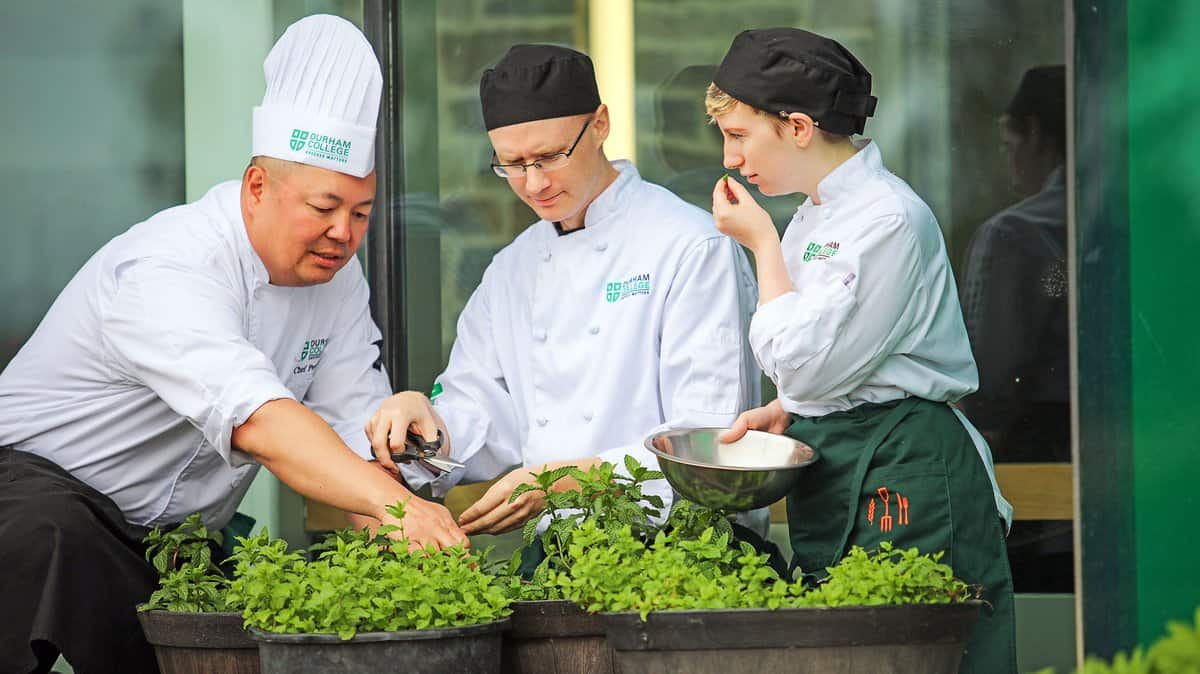Innovation in Durham Timeline (Part 4) – from wind tunnels in Oshawa to robotic prosthetic arms
Published October 25, 2021 at 11:08 am

From wind tunnels that can simulate any kind of weather to the latest in robotics, Durham Region continues to develop and attract the brightest minds and the greatest innovators.
This is Part 4 of an ongoing timeline of inventions and innovations in Durham over the past century-and-a-half, in collaboration with Invest Durham, the Region of Durham’s Economic Development and Tourism wing.
Some of the world’s biggest challenges rise up right here and it’s the entrepreneurial spirit that has helped Durham build a robust innovation ecosystem that translates research and development assets into jobs and investment.
2011
ACE Climatic Wind Tunnel The state-of-the-art ACE Climatic Wind Tunnel is operational. The world-class facility, which can simulate weather from a blizzard to a hot day in Arizona, is used by big automakers to test vehicles. With its moving ground plane, it is one of the most technologically advanced facilities of its kind in the world. ACE is also able to simulate a broad range of environments, and testing has included housing, bridges, product packaging and even athletes.
2013
Galen Weston Centre for Food (CFF) Durham College opens the W. Galen Weston Centre for Food (CFF) in Whitby, one of Canada’s first culinary education facilities to bring the concept of ‘Field to Fork’ to life. CFF is focused on local food, regionalism, sustainability and wellness, and it plays a leading role in providing students with hands-on experience of the full cycle of production: farming, preparing, serving and celebrating food.

2013
ByBlacks.com, the top-ranked Black Canadian online magazine is founded, and in 2020, they receive a Heritage Canada grant to grow their business. The website promotes Black Canadian entrepreneurs and serves as a hub where viewers can stay educated about topics surrounding the Black community.
2016
Darlington Nuclear Generating Station The World Association of Nuclear Operators names Darlington Nuclear Generating Station in Clarington one of the safest and top performing nuclear stations in the world—for the third time in a row.
2017
Durham College AI/Hub Durham College launches the AI/Hub, a first-of-its-kind applied research centre focused on how ‘narrow AI’—such as machine learning, decision support, natural language processing and automation to recommend strategic options— can make decisions autonomously.
2017
360insights 360insights is named one of the Best Places to Work in Canada by the Great Place To Work Institute. Proudly located in Whitby, 360insights has innovated a software platform for large manufacturers to launch and execute flexible incentive programs. By 2020, 360insights is one of the largest global Channel Incentives Management providers in the world.
2017
Autonomous Vehicle Innovation Network (AVIN) at ACE Ontario Tech University’s ACE Climatic Wind Tunnel is named a key hub within the Ontario Autonomous Vehicle Innovation Network. ACE provides accurate sensing technologies and reliable machine learning techniques to improve urban traffic management, design and connectivity.
2018
smartARM Ontario Tech University student and his teammate from University of Toronto win the Imagine Cup— Microsoft’s annual innovation competition—for their invention, the smartARM, a prosthetic robotic hand. The competition saw more than 40,000 student competitors register and 49 teams from 33 countries qualify for the Imagine Cup World Finals

2018
Building Youth Capacity Brock Youth Centre rebrands their organization as Building Youth Capacity (BYC) to reflect services in Durham’s three northern municipalities. The organization provides innovative programs and services to improve the social and economic well-being of youth and encourage entrepreneurship. Success stories include a virtual hackathon that resulted in the outcome of a youth mental health app going into development.
2019
Life-Saving Medical Isotope Darlington Nuclear announces planned production of the life-saving medical isotope molybdenum-99 (Mo-99)—used for patients who need skeletal, brain and organ imaging to detect and diagnose harmful diseases—continuing OPG’s decades long commitment to supply the world with valuable radioactive isotopes.
insauga's Editorial Standards and Policies advertising





